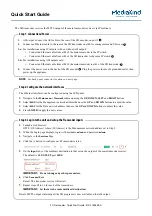
B45IRCINS4 V4.0 IR Classmate & IR Classmate
+
Soundfield ‒ Reference & Installation Guide
5
4
IR Classmate & IR Classmate
+
Soundfield ‒ Reference & Installation Guide B45IRCINS4 V4.0
IR Classmate & IR Classmate
+
Soundfield
IR Classmate & IR Classmate
+
Soundfield
Swift
TX
microphone transmitter
The two parts of the neck clasp
may be pushed together or
pulled apart either directly or
by sliding.
To turn on the Swift
TX
press and hold the on button until the status indicator lights. Similarly
to turn off or mute the Swift
TX
press and hold the button until the indicator goes out.
Charge socket
Emitter
window
Aux
socket
Microphone
socket
Vol +
Vol ‒
On/Off/Mute
15
0
m
m
Status indicator:
Green =
on
Alternating red/green = recharge soon
Red =
charging
Orange = charged
Using the audio outputs effectively
1. Feeding a personal fm transmitter
If someone in the class uses a radio aid (such as fmGenie) with their hearing aids, the audio output
of the IR Classmate soundfield can be rebroadcast to their receiver by connecting the FM radio aid
transmitter to the IR Classmate wall unit.
The personal FM transmitter may be connected
to either of the aux outputs.
Depending on the facilities in the personal fm
transmitter, the connection may be direct
to the Tx ‘Aux In’ socket or via an attenuated
lead to the Tx ‘Mic’ socket.
Generally, if the soundfield signal is applied
through the Tx ‘Aux In’ socket, the Tx mic will
remain live (usually undesirable) but if applied
to the Tx ‘Mic’ socket, the Tx mic will be muted
(desirable).
Connevans rebroadcast soundfield connection packs are as follows:
45SIBKFMGB for: Connevans fmGenie transmitter, Phonak SmartLink & Sm,
ZoomLink & Z or EasyLink & E
45SIBKINS
for: Phonak Roger Inspiro, Campus
45SIBKFMGC for: Cochlear implant users
2. Feeding an inductive loop amplifier
Either of the aux outputs may be used to drive an external inductive loop amplifier.
3. Feeding an audio recorder
Either of the aux outputs may be used to feed an audio recorder (CD/MP3/computer etc.)
via the recorder ‘aux in’ socket. An output lead for an ‘AUX IN’ phono pair is available
(Connevans part no: MXA118D).
4. Feeding additional amplifiers and speakers
In some cases where rooms are very large, or more than six speakers or a zone system is required
where the sound may need to be relayed to another room, one or both aux outputs may be
connected to the aux inputs of another system.
IR Classmate Transmitters
Indicator LED
The indicator LED shows green, red or orange, depending on the status or mode of the Swift
TX
.
In normal use:
Solid green
‒
the Swift
TX
is on and
working.
Alternating green/red
‒
the battery
is low and the unit needs to be recharged.
No indication
‒
the unit is switched off.
When charging:
Solid red
‒
the Swift
TX
is charging normally
and is turned off.
Flashing red
‒
there is a problem with
charging ‒ refer to fault finding appendix.
Solid orange
‒
the Swift
TX
is charged, it is
turned off and the charger has switched to
trickle charge.
Adjusting the neck strap
Correct positioning of a transmitter is important. The Swift
TX
should be
worn so that the emitter faces forwards and the unit rests about 150mm
(the length of a biro) below the mouth ‒ this means it should sit just
below your collarbone.
Both straps can be easily adjusted as required, using the sliders.
Note ‒ replacement straps are available, please see www.DeafEquipment.co.uk
45IRTXSTRAP Replacement strap 45IRTXCLIP Replacement clip
Door compartment
There is enough room to store a Swift
TX
transmitter, a
handheld microphone and the charging leads, as shown.
The handheld microphone should be stored with the charge
socket to the top right hand side to avoid straining or
trapping the charge cable.
Make sure that the items in the door do not stick out so that
they could be crushed against the volume controls etc.































